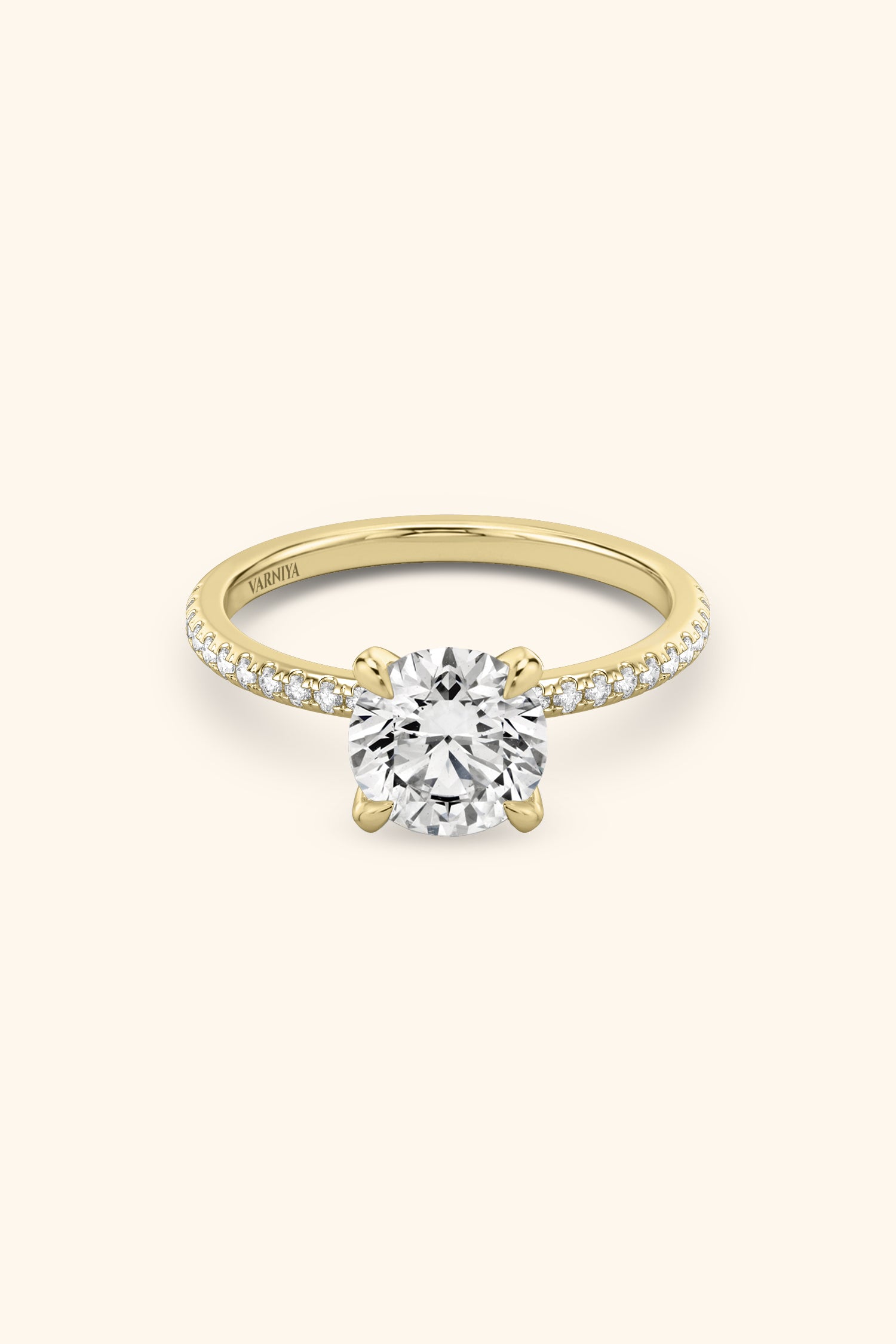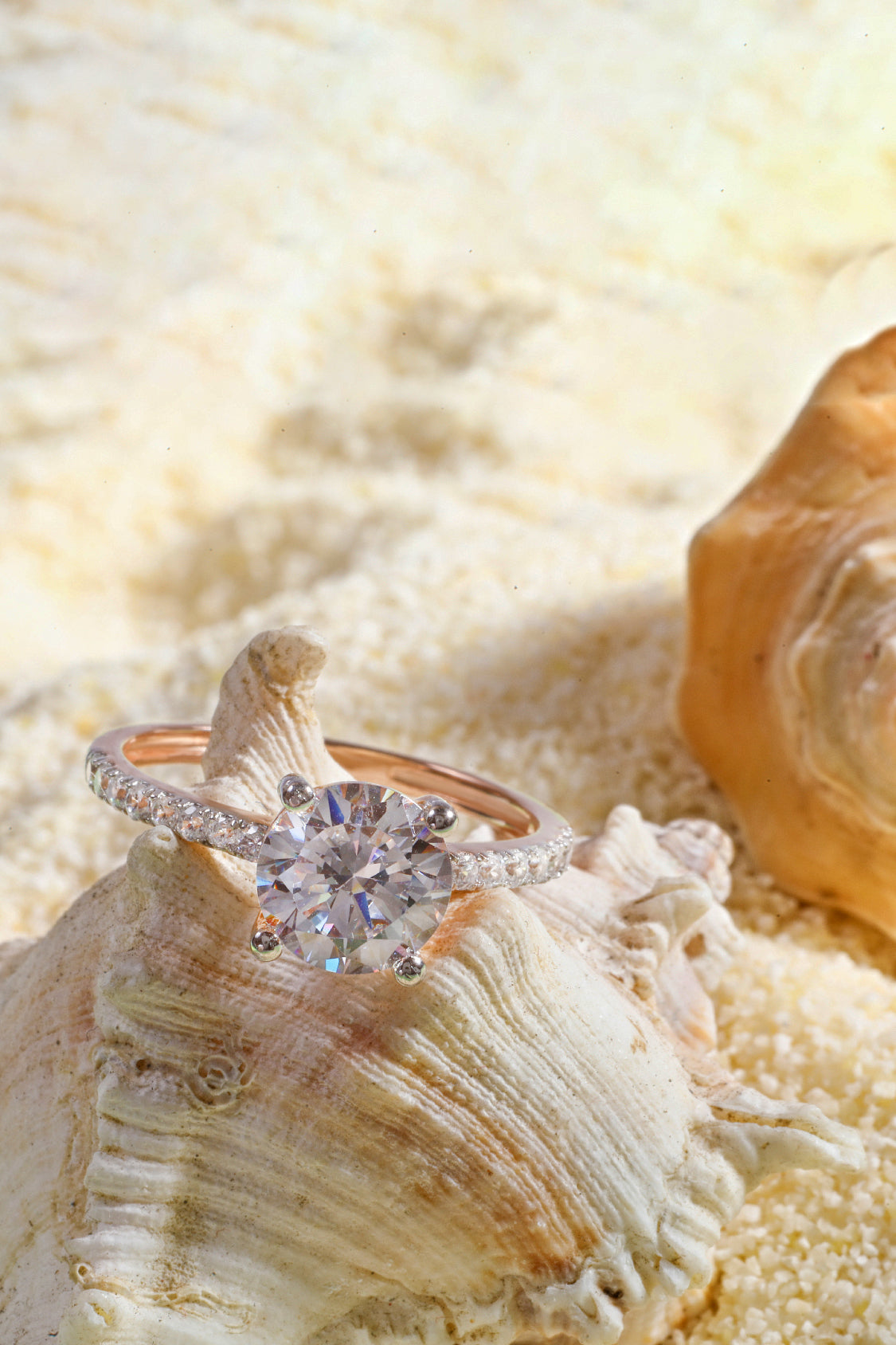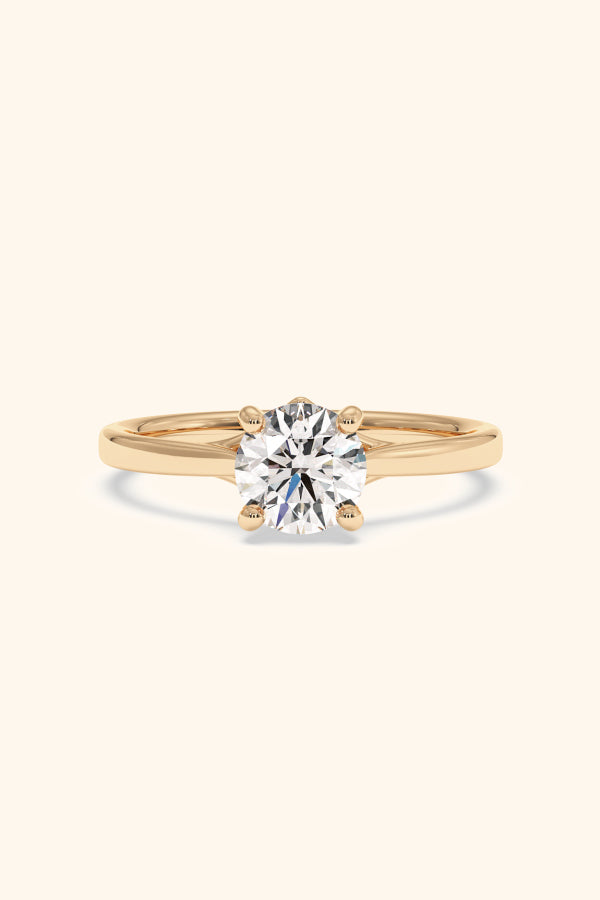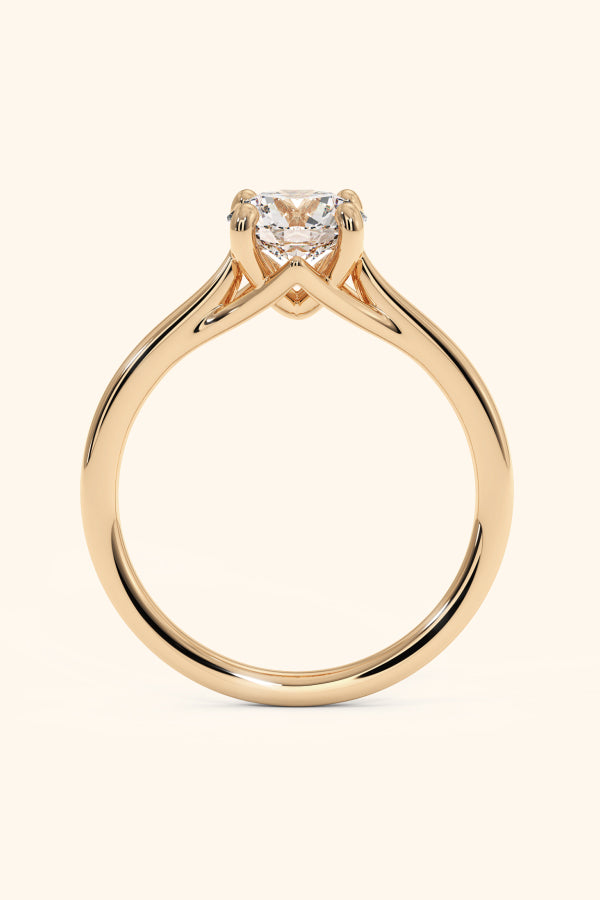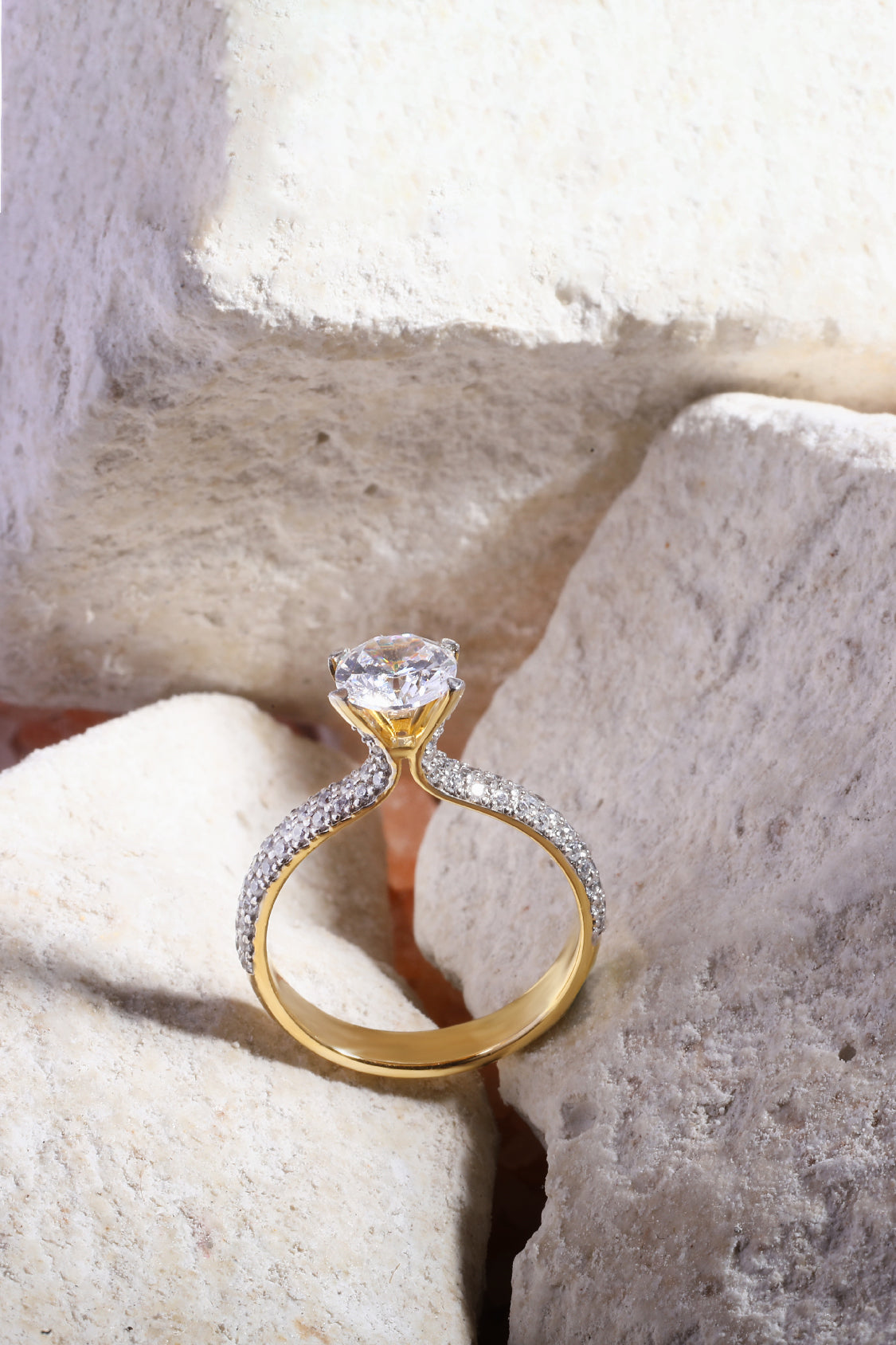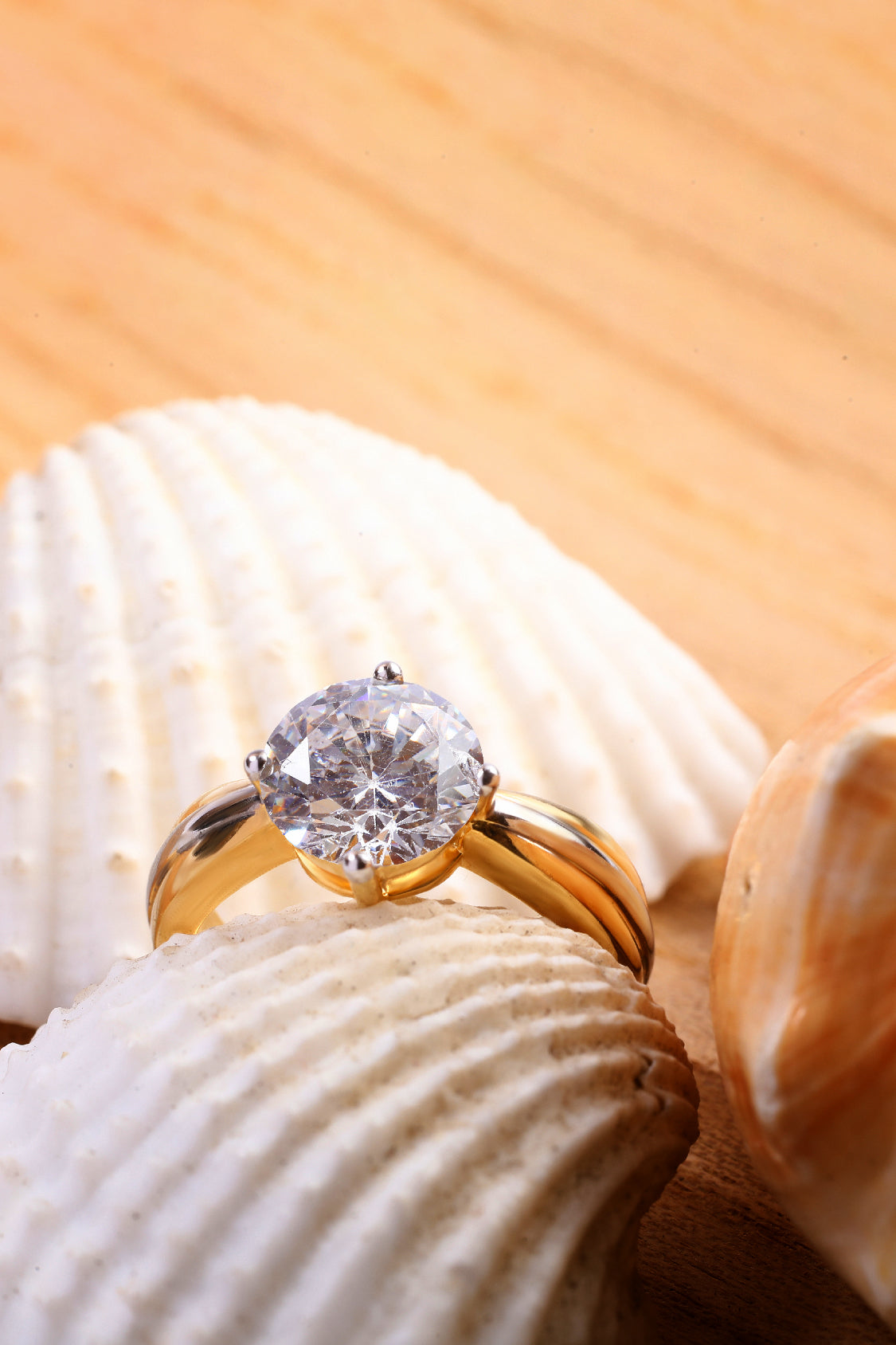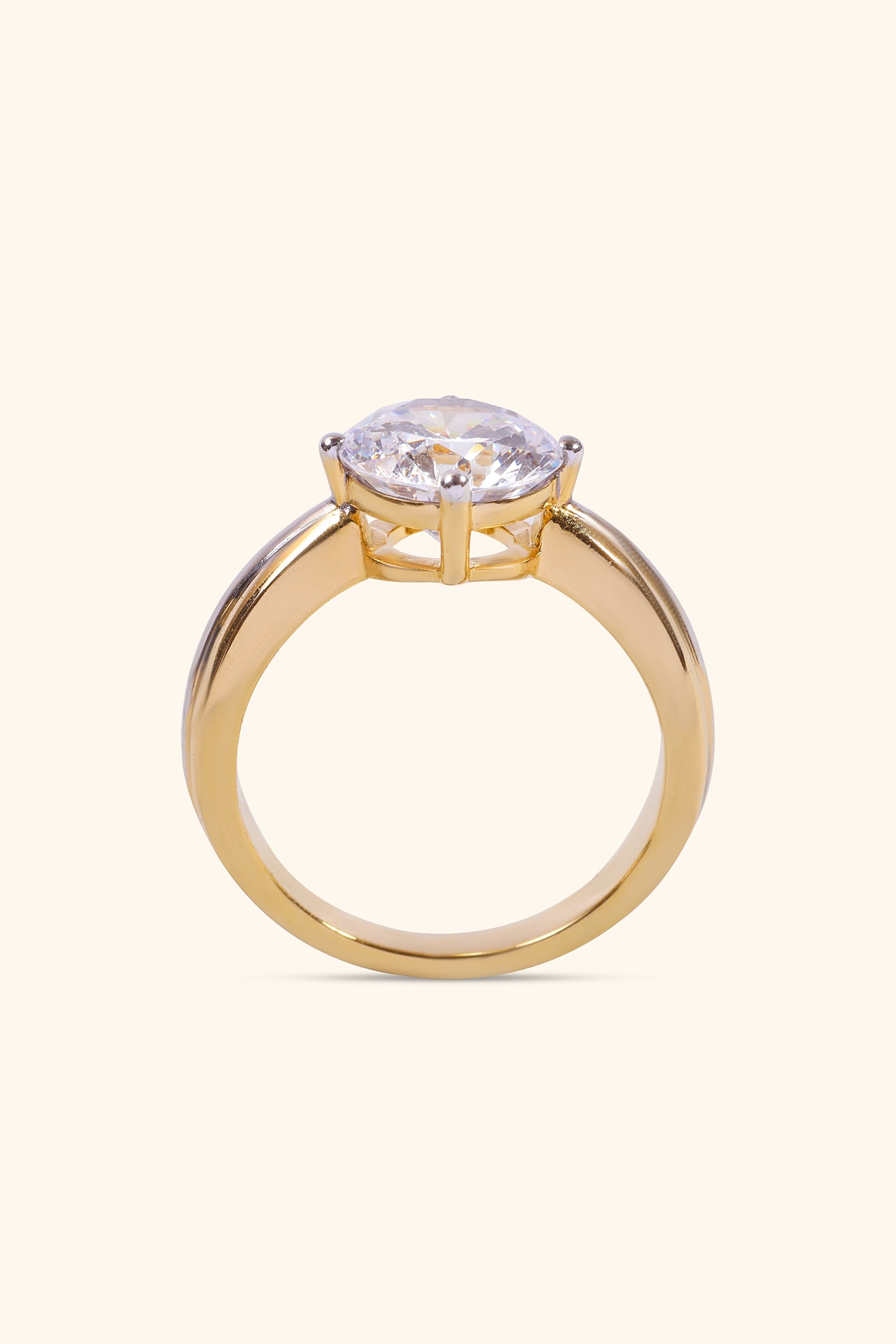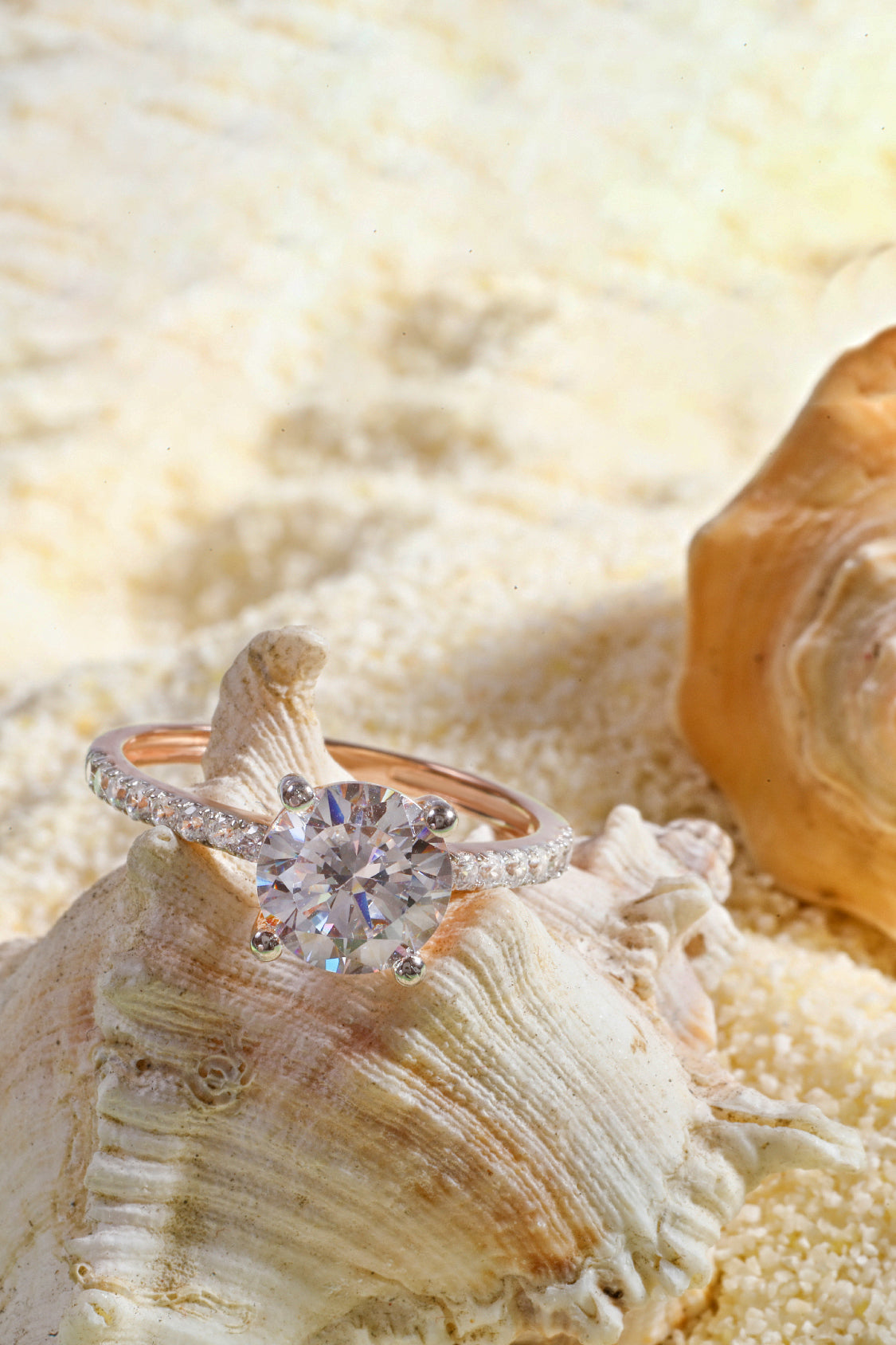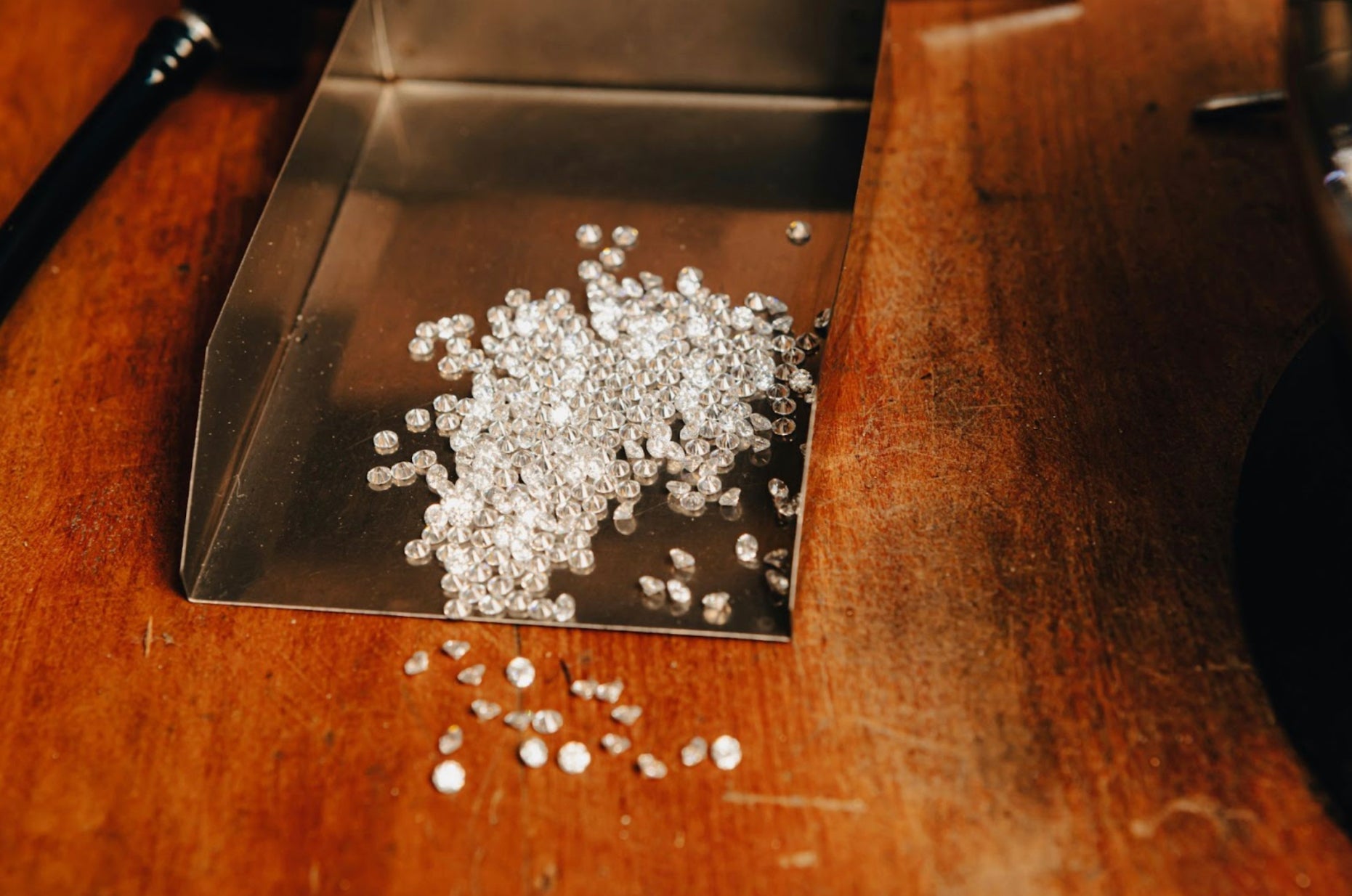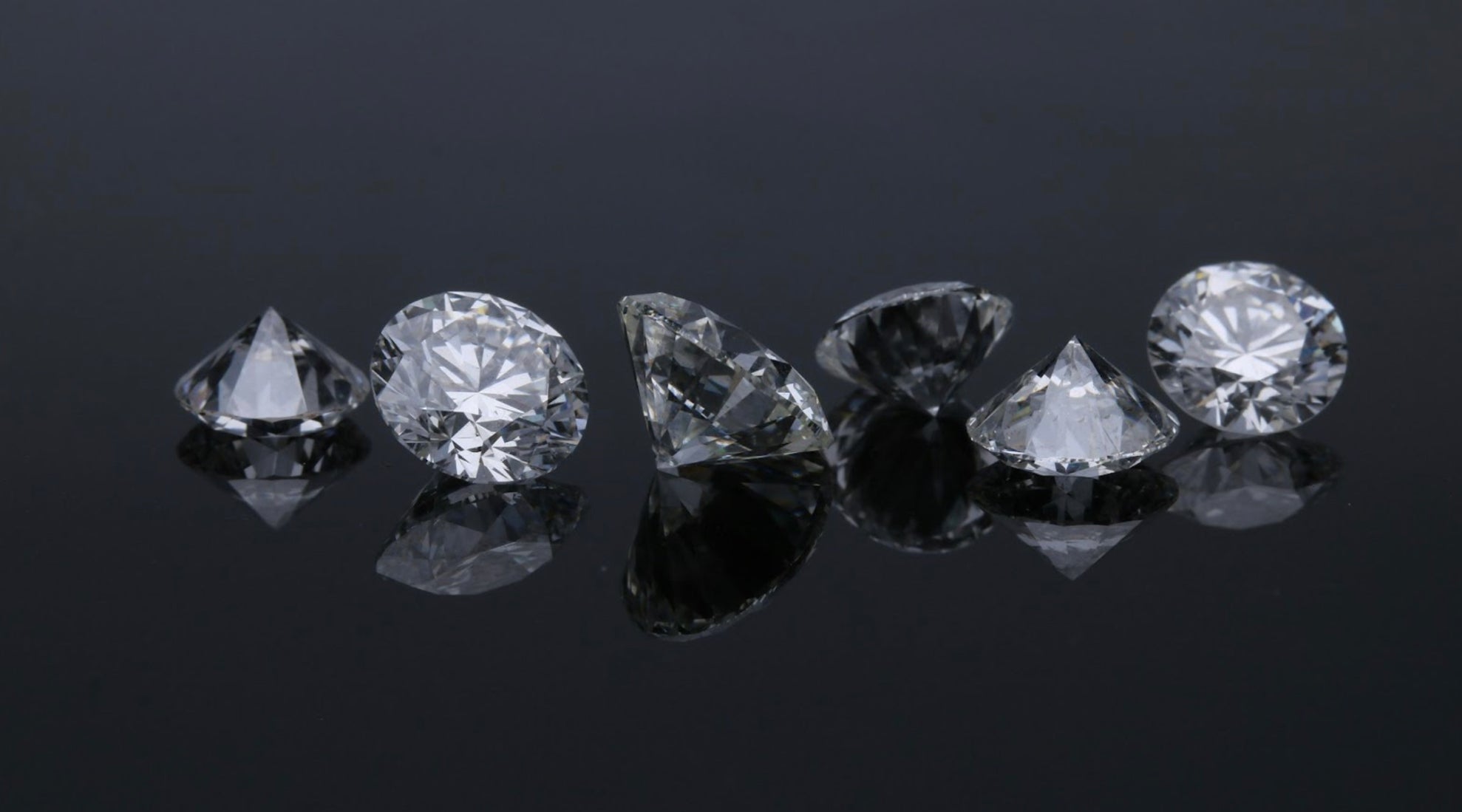
How Lab-Grown Diamonds Are Made: Facts & Process
Want to know how lab-grown diamonds are made? Explore the step-by-step process, key facts, and how they compare to natural diamonds.
Are you aware that lab-grown diamonds are chemically, physically, and visually identical to natural diamonds? They’re not “fake” or “synthetic” in the traditional sense—they’re real diamonds, just made in a lab instead of deep underground.
In fact, the global lab-grown diamond market is projected to reach $49.9 billion by 2030, proving they’re here to stay (Source: Allied Market Research).
So, how are these brilliant gems created? Whether you’re curious about the HPHT vs. CVD process, their certification, or how they compare to mined diamonds, this guide breaks it all down—no fluff, just facts.
What are Lab-Grown Diamonds?
Lab-grown diamonds are real but not synthetic diamonds, made in a controlled environment instead of deep under the Earth’s surface. They have the same physical, chemical, and optical properties as natural diamonds. Even experts need specialist equipment to tell them apart!
Lab-grown diamonds are eco-friendly, affordable, and a popular choice for diamond rings and jewelry. 💎
Looking for the perfect diamond that combines beauty, affordability, and sustainability? Explore Varniya’s stunning collection of lab-grown diamonds and discover how cutting-edge technology is shaping the future of fine jewelry.
Two Main Methods to Create Lab-Grown Diamonds
1. HPHT Diamonds ( The High-Pressure High-Temperature Process)
HPHT diamonds are made by mimicking Earth's natural process of diamond creation. Scientists place a small diamond seed under high pressure high temperature, then apply extremely high temperatures (over 2,200°F) and high pressure (above 1.5 million PSI).
-
Carbon atoms start bonding around the diamond seed, forming a new diamond crystal.
-
This process can take a few weeks instead of the millions of years required for mined diamonds.
-
HPHT diamonds have high thermal conductivity, making them physically identical to natural diamonds.
Did you know? HPHT diamonds are often used to enhance color in yellow diamonds and create gem-quality diamonds for jewelry.
2. Chemical Vapor Deposition (CVD) Process
CVD diamonds are created using cutting-edge technology. This process starts with a small diamond seed placed inside a vacuum chamber filled with a hydrocarbon gas mixture.
-
The chamber is heated to 1,500°F, breaking down the gases.
-
Carbon atoms form on the diamond seed, slowly building a single crystal diamond layer by layer.
-
CVD diamonds are often chemically and physically identical to mined diamonds.
This method produces high-quality, pure carbon diamonds with fewer impurities than HPHT diamonds. Most CVD diamonds also require an HPHT treatment to enhance color.
CVD Diamonds vs. HPHT Diamonds
Both HPHT and CVD diamonds are real diamonds, but they have key differences:
| Feature | CVD Diamonds (Chemical Vapor Deposition) | HPHT Diamonds (High-Pressure High-Temperature) |
|---|---|---|
| Formation Process | Carbon atoms form layer by layer on a diamond seed inside a vacuum chamber filled with hydrocarbon gas. | Mimics Earth's natural diamond formation by applying extreme pressure and high temperature to a diamond seed. |
| Growth Time | 2-4 weeks | 3-4 weeks |
| Purity | Generally higher purity with fewer metallic inclusions. | May contain metallic inclusions due to high-pressure conditions. |
| Color | Naturally brown or grayish, often treated with HPHT to enhance whiteness. | More likely to be colorless or yellow, but can also undergo treatment for enhancement. |
| Clarity | Fewer internal flaws due to controlled environment. | May have more inclusions due to extreme pressure conditions. |
| Crystal Structure | Grows in a flat, layered structure, which can lead to unique growth patterns. | Grows in a cubical structure, similar to natural diamonds. |
| Fluorescence | Often shows stronger fluorescence under UV light. | Typically has weaker fluorescence than CVD diamonds. |
| Hardness (Mohs Scale) | 10 (Same as natural diamonds) | 10 (Same as natural diamonds) |
| Common Uses | Engagement rings, fine jewelry, high-tech applications (due to higher purity). | Jewelry, industrial tools, and gem-quality diamonds. |
| Best for… | Those looking for high-purity diamonds with fewer inclusions. | Those seeking natural-looking diamonds with strong durability. |
| Market Availability | Increasingly popular due to advanced technology and affordability. | Common but often slightly more expensive than CVD diamonds. |
| Eco-Friendliness | Uses lower temperatures and energy, making it more environmentally friendly. | Requires higher energy consumption due to extreme heat and pressure. |
| Certification | Certified by GIA, IGI, AGS, and other gemological institutes. | Certified by GIA, IGI, AGS, and other gemological institutes. |
Both methods produce lab-grown diamonds that are chemically identical to natural diamonds. Even experts need specialist equipment to tell them apart!
How Lab-Grown Are Diamonds Made
Step 1: Selecting the Diamond Seed
A diamond seed is a tiny piece of real diamond that starts the growth process. Think of it like planting a seed to grow a tree.
-
Scientists pick a high-quality diamond seed to ensure the new diamond forms properly.
-
The seed is placed in a controlled environment where it can grow into a gem-quality diamond.
-
The carbon atoms in the seed help create a strong diamond crystal structure.
This step is important because the seed determines the size, clarity, and purity of the final diamond.
Step 2: Choosing the Growth Method
Once the diamond seed is selected, scientists decide between two main methods to grow the diamond:
-
HPHT (High-Pressure High-Temperature): The seed is placed under extreme heat and pressure, allowing pure carbon to form around it and grow into a diamond.
-
CVD (Chemical Vapor Deposition): The seed is placed in a heated gas chamber, where carbon atoms stick to it, forming a single crystal diamond layer by layer.
Step 3: Growth Process in a Controlled Environment
The growth process starts when carbon atoms form around the small diamond seed. These atoms slowly build up, creating a diamond crystal layer by layer.
-
n the HPHT process, extreme high pressure and high temperature cause pure carbon to bond and grow into a new diamond formation.
-
In the CVD process, a hydrocarbon gas mixture is heated, breaking down into carbon atoms that settle onto the diamond seed.
-
This growth continues for several weeks until the diamond reaches the desired carat weight.
At this stage, the diamonds still look rough and need additional treatment to bring out their shine.
Step 4: Cooling and Removing Impurities
Once the diamond has grown, it must cool down before further processing. This step ensures the crystal structure stays strong and prevents damage.
-
Cooling: The diamonds are slowly cooled in a controlled environment to avoid cracks.
-
Purification: High-energy techniques like HPHT treatment are used to remove any impurities and improve diamond quality.
-
Color Enhancement: Some lab-grown diamonds may undergo extra treatments to enhance their color and clarity.
After cooling, the lab-grown diamond crystal is chemically and physically identical to a natural diamond. Even experts need specialist equipment to tell them apart!
Step 5: Cutting and Polishing
Raw lab-grown diamonds don’t look like the shiny gems you see in diamond rings. They need precise cutting and polishing to bring out their brilliance.
-
Planning the Cut: Experts study the diamond crystal to decide the best cut. They use specialist equipment like lasers to ensure minimal waste.
-
Shaping the Diamond: A high-speed laser or saw slices the rough diamond into smaller pieces. The goal is to maximize carat weight while preserving quality.
-
Polishing for Perfection: The diamonds are polished using a fine diamond-coated wheel to achieve maximum sparkle.
This step is crucial because a well-cut diamond reflects light better, making it look brighter and more valuable.
Step 6: Grading and Certification
Once cut and polished, the diamond is sent for grading and certification. This ensures it meets gem-quality standards and is physically identical to a natural diamond.
-
Expert Examination: Specialists check the diamond’s color, clarity, cut, and carat weight using advanced technology.
-
Certification by the Gemological Institute: Trusted organizations like the Gemological Institute or IGI certify the diamond’s authenticity.
-
Laser Inscription: Some diamonds get a microscopic serial number to track their origin and certification.
Final Step: Setting in Jewelry
Once a lab-grown diamond crystal is polished and graded, it is carefully placed into jewelry settings. This step transforms the rough diamond back into stunning rings, necklaces, earrings, and bracelets.
-
Choosing a Setting: Jewelers select the right metal, such as gold or platinum, to hold the diamond securely.
-
Mounting the Diamond: The lab-grown diamond is set using prongs, bezels, or pave settings to enhance its brilliance.
-
Final Polishing: After setting, the jewelry is polished to give it a flawless, high-quality finish.
A diamond shines best when set beautifully. Whether you prefer a classic solitaire, a halo setting, or a custom design, Varniya has the perfect piece waiting for you.
Explore our exquisite diamond jewelry today!
Why Choose Lab-Grown Diamonds?
Lab-grown diamonds are becoming more popular. But why do people prefer them over mined diamonds? Here are some key reasons:
-
They Are Real Diamonds: Lab-grown diamonds have the same chemical, physical, and optical properties as natural diamonds. Even experts need specialist equipment to tell them apart.
-
More Affordable: Since they don’t require diamond mining, lab-grown diamonds cost 30-40% less than mined ones. You get a bigger, brighter diamond for the same budget.
-
Ethical and Eco-Friendly
-
No need for diamond mining, which can harm the environment.
-
No connection to conflict diamonds or unethical labor practices.
-
Uses cutting-edge technology instead of damaging the earth’s surface.
-
Available in Unique Colors: Lab-grown diamonds come in many colors, including yellow diamonds and even blues and pinks. These colors are often rare and expensive in natural diamonds.
-
High Quality and Certified: Every lab-grown diamond is checked for carat weight, clarity, cut, and color by trusted organizations like the Gemological Institute.
The Role of Technology in Diamond Production
Technology has completely changed how diamonds are made. Instead of waiting millions of years for natural diamonds to form deep in the Earth’s mantle, scientists can now create lab-grown diamonds in just a few weeks.
How Technology Helps in Making Lab-Grown Diamonds
-
The HPHT process recreates the natural conditions under which diamonds form underground. Scientists use a cubic press to apply extremely high pressure and high temperatures.
-
Under this intense heat and pressure, pure carbon starts bonding, forming a diamond crystal. This method has been used for decades to produce gem-quality diamonds.
-
The CVD process takes a different approach. A small diamond seed is placed inside a vacuum chamber filled with a hydrocarbon gas mixture. When heated, the gas breaks down into carbon atoms, which then settle on the seed, slowly forming a single crystal diamond.
-
This process allows for better control over the diamond’s purity and helps create high-quality stones with fewer impurities.
Why Technology Makes Lab-Grown Diamonds Better
-
One of the biggest advantages of technology in diamond production is faster creation time. While natural diamonds take millions of years to form, lab-grown diamonds are produced in just weeks. This means more diamonds can be made without the need for environmentally harmful mining.
-
Another key benefit is affordability. Lab-grown diamonds do not require the expensive processes associated with diamond mining, making them 30-40% cheaper than mined diamonds. Buyers can get a bigger, high-quality diamond for the same budget.
-
Technology also makes diamond production more ethical and sustainable. Traditional mined diamonds can come from conflict zones, but lab-grown diamonds eliminate that risk.
-
Since they are created in controlled lab settings, they do not contribute to environmental destruction or unethical labor practices.
The Rise of Lab Diamond Rings in Jewelry
Lab-grown diamonds are becoming a top choice for engagement rings and fine jewelry. One of the main reasons is that they are real diamonds. Many people wonder, are lab-grown diamonds real? The answer is yes! They have the same chemical and physical properties as natural diamonds, and even experts need specialist equipment to tell them apart.
Another reason for their popularity is their affordability. Since lab-grown diamond rings do not require diamond mining, they cost 30-40% less than mined diamonds. This allows buyers to afford a bigger, higher-quality diamond for the same price.
One of the biggest advantages of lab-grown diamonds is the variety of colors and styles available. Natural yellow diamonds are rare and expensive, but lab diamonds can be produced in a range of colors, making them more accessible. Additionally, buyers can customize their diamond’s shape and setting, ensuring their lab created diamond ring is truly unique.
Why settle for anything less when you can have it all? Varniya’s lab-grown diamond rings are more affordable, ethical, and eco-friendly than mined diamonds. Enjoy 30-40% savings, guilt-free luxury, and timeless beauty.
Find your perfect diamond ring today!
How to Choose the Best Lab-Grown Diamond for You
1. Set Your Budget First
Before shopping, decide how much you want to spend. Since lab-grown diamonds are more affordable, you can get a bigger, better-quality diamond for your budget.
-
Compare Prices: Check the cost of lab-grown diamonds vs. mined diamonds. You’ll see a big price difference.
-
Consider Carat Size: Since lab diamonds are cheaper, you can afford a larger carat weight without spending extra.
-
Check for Certification: Make sure the diamond is graded by a trusted gemological institute for gem quality.
2. Check the 4Cs: Cut, Color, Clarity, and Carat
The 4Cs determine the quality of a lab-grown diamond. These factors affect how the laboratory grown diamond looks and its overall value.
-
Cut: This is the most important factor. A well-cut diamond shines the brightest. The best cuts reflect light beautifully.
-
Color: Diamonds come in different shades. The less color, the better. If you want something unique, yellow diamonds are a great option.
-
Clarity: Clarity measures how many tiny flaws (or inclusions) a diamond has. Fewer flaws mean a clearer and more valuable diamond.
-
Carat: Carat weight tells you the size of the diamond. Bigger diamonds cost more, but with lab-grown diamonds, you can get a larger carat weight for the same price as a smaller mined diamond.
3. Select the Best Diamond Shape for You
The shape of a diamond affects its look and style. Some shapes make the diamond appear larger, while others create a classic or modern feel.
-
Round: The most popular and shiniest choice. It maximizes sparkle.
-
Princess: A square shape with sharp edges. It looks bold and elegant.
-
Oval: Makes fingers look longer and gives a unique look.
-
Cushion: A soft square shape with rounded edges. It gives a vintage feel.
-
Emerald: A rectangular shape that looks sleek and classy.
4. Choose Between HPHT or CVD Diamonds
-
HPHT Diamonds: These diamonds are made by recreating the extreme high pressure and high temperature found deep inside the earth’s mantle. This process helps remove unwanted colors, making the diamond physically identical to a natural diamond.
-
CVD Diamonds: These diamonds are grown using chemical vapor deposition (CVD), where a small diamond seed is placed in a chamber filled with a hydrocarbon gas mixture. This method allows diamonds to form layer by layer at a lower cost.
💡 Which One Should You Pick?
-
If you want a colorless diamond, HPHT might be the better option.
-
If you want an affordable, high-quality diamond, CVD is a great choice.
-
Both types are real diamonds, so you can’t go wrong!
5. Look for Certification and Grading
Would you buy a diamond without knowing if it’s real? No! That’s why certification is important. A gemological institute like the GIA (Gemological Institute of America) or IGI (International Gemological Institute) checks the diamond’s quality.
Here’s what a certification tells you:
-
Carat weight – How big the diamond is.
-
Clarity – How many tiny flaws the diamond has.
-
Cut – How well the diamond reflects light.
-
Color – If the diamond has a yellow or colorless look.
6. Decide on Fluorescence Preference
Fluorescence is how a diamond reacts to ultraviolet (UV) light. Some lab-grown diamonds glow blue, yellow, or white under UV light. Others show no reaction at all. But does it really matter?
-
Strong fluorescence: This can make the diamond appear whiter but might also give it a hazy look.
-
Medium fluorescence: Often invisible to the naked eye, this can make a diamond look brighter.
-
No fluorescence: These diamonds remain unchanged under UV light and are often priced higher.
💡 Which One Should You Pick?
-
If you want the brightest look, medium fluorescence is a good choice.
-
If you want a pure and clear diamond, go for none.
-
If you love a unique glow, strong fluorescence might be fun!
7. Choose a Reputable Retailer
Not all diamond sellers are the same. Some offer certified diamonds from trusted labs, while others don’t. Here’s how to find a good retailer:
-
Look for Certification: Always buy from a seller that provides GIA or IGI certificates. These prove the diamond’s quality.
-
Check Reviews: Read customer feedback. Are people happy with their diamonds?
-
Ask About Returns: A good retailer offers returns and warranties.
-
Compare Prices: Don’t overpay! Check prices from multiple trusted sellers.
8. Consider Ethical and Sustainable Options
-
Lab-grown diamonds are an ethical choice. Unlike mined diamonds, they are created in controlled environments. This means no harmful mining practices and no impact on the earth's surface or earth's mantle. They also avoid concerns about conflict diamonds from the mined diamond industry.
-
When picking a lab-grown diamond, check if the manufacturer uses clean energy. Some companies rely on high thermal conductivity technology to reduce waste. Also, look for brands that use cutting-edge technology to lower carbon emissions.
-
Many lab-created diamonds come with a chemical properties report showing sustainability claims. Choosing responsibly ensures your diamond is both beautiful and eco-friendly.
9. Pick the Perfect Setting for Your Diamond
Once you’ve chosen the right diamond, it's time to pick the perfect setting. The setting holds your diamond securely in place. It also impacts how much light enters the stone, affecting its sparkle.
Popular settings include:
-
Solitaire – A classic design that highlights the diamond.
-
Halo – Surrounds the center diamond with smaller stones for extra brilliance.
-
Pavé – Small diamonds cover the band, adding sparkle.
-
Bezel – A sleek metal rim surrounds the diamond for protection.
10. Compare Prices and Warranties
-
Lab-grown diamonds come in a wide range of prices. Some retailers offer competitive deals, while others include added services like free resizing or trade-in options. Always compare prices across multiple sellers. Check if the price reflects the diamond's cut, clarity, and carat weight.
-
Warranties are just as important as pricing. Some stores offer lifetime warranties covering repairs and polishing. Others provide limited warranties that only cover manufacturing defects.
-
Always read the fine print. If a retailer doesn’t offer a warranty, reconsider buying from them. A good diamond should come with reliable after-purchase care.
11. Trust Your Instincts and Buy What You Love
-
At the end of the day, your diamond should make you happy. Don’t just focus on technical details. Choose a diamond that speaks to you. Whether you prefer a flawless diamond or one with a unique character, your choice should match your style and values.
-
If you're unsure, visit a jeweler and try different lab-grown diamond rings. See how they look under different lighting. If you’re shopping online, request detailed images and certification. Trustworthy retailers provide clear return policies in case you change your mind.
-
Buying a diamond is a personal decision. Trust your instincts, do your research, and choose what feels right for you.
Myths and Facts About Lab-Grown Diamonds
-
Myth: Lab-Grown Diamonds Are Fake
Fact: Lab-grown diamonds have the same physical, chemical, and optical properties as mined diamonds. Even experts need specialist equipment to tell them apart! -
Myth: Lab Diamonds Are Lower Quality
Fact: Lab diamonds can be higher quality than natural ones because they have fewer impurities. They are created in controlled environments, ensuring flawless clarity and precision. -
Myth: Lab Diamonds Don’t Hold Their Value
Fact: The diamond resale market is unpredictable for all diamonds, whether natural or lab-grown. However, lab diamonds provide more value upfront, costing 30-40% less than mined diamonds. -
Myth: Lab-Grown Diamonds Are Not Eco-Friendly
Fact: Unlike diamond mining, which harms the earth’s surface, lab-grown diamonds require less land, water, and energy. They are a sustainable alternative to traditional diamonds. -
Myth: Lab Diamonds Don’t Have Certification
Fact: Lab-grown diamonds are graded and certified by the Gemological Institute and other top labs, just like natural diamonds. Their cut, color, clarity, and carat weight are carefully examined. -
Myth: Lab Diamonds Are Not as Strong as Natural Diamonds
Fact: Both natural and lab-grown diamonds are made of pure carbon and have the same hardness (10 on the Mohs scale). This means lab diamonds are just as durable and perfect for daily wear. -
Myth: You Can Always Tell the Difference
Fact: To the naked eye, there is no difference between lab-grown and mined diamonds. Even jewelers need advanced tools to distinguish them. -
Myth: Lab Diamonds Are Just a Trend
Fact: The lab-grown diamond market is growing fast. More people choose them for engagement rings, jewelry, and even investment pieces. They are here to stay!
How Lab-Grown Diamonds Are Certified by the Gemological Institute
Lab-grown diamonds go through strict testing before they get certified. The Gemological Institute of America (GIA) and other organizations check these cultured diamonds very carefully. They ensure that each diamond meets high standards.
What Is Diamond Certification?
Certification proves a diamond’s quality. Experts check key features like cut, color, clarity, and carat weight. This helps buyers know exactly what they are getting.
How Are Lab-Grown Diamonds Certified?
-
Testing for Authenticity – Specialists use advanced tools to confirm if the diamond is lab-created or natural.
-
Grading Process – The diamond is examined for its clarity, color, and structure.
-
Certification Issued – After testing, a report is created with the diamond’s details.
Lab-grown diamonds offer a sustainable, ethical, and affordable alternative to mined diamonds. They are real diamonds with the same brilliance, durability, and certification. Whether you’re buying for beauty, value, or eco-friendliness, lab-grown diamonds provide a smart and responsible choice.


